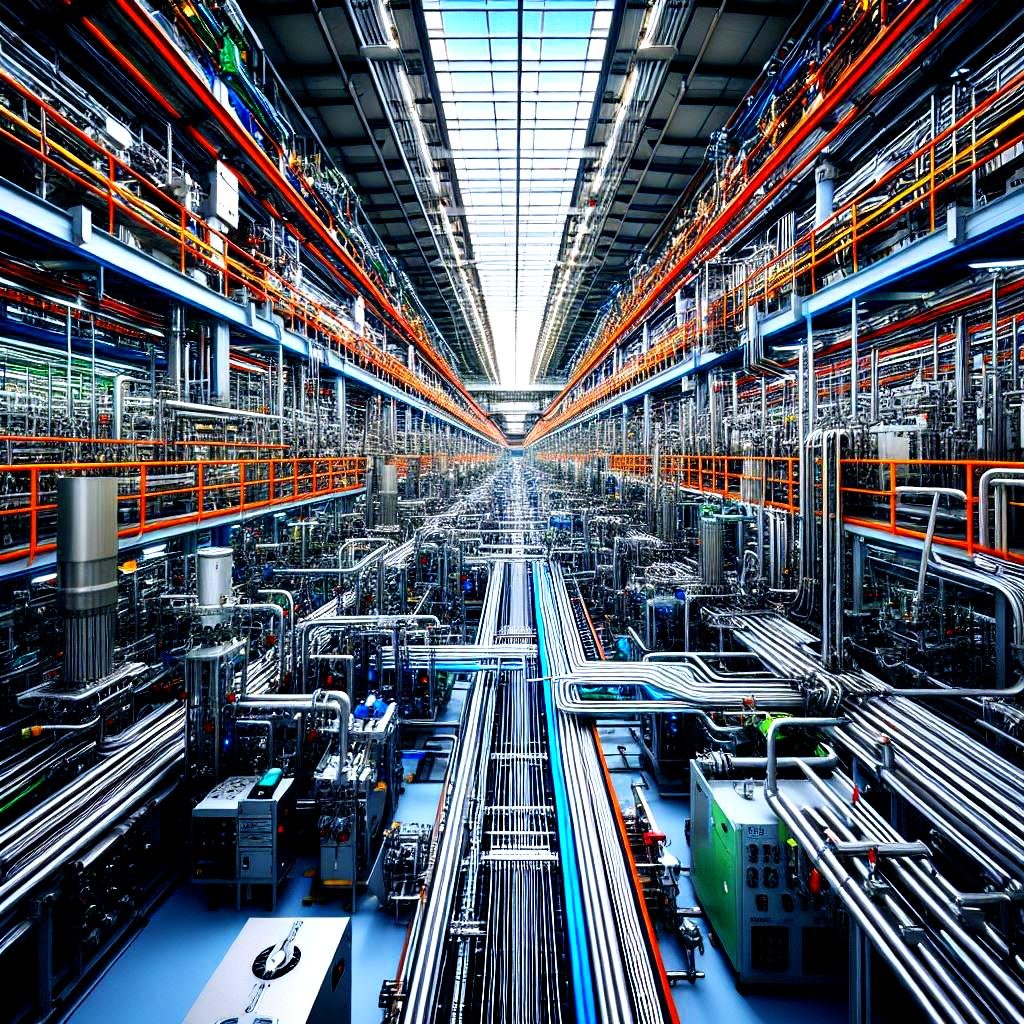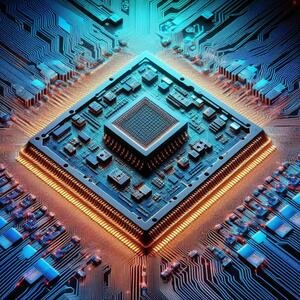Semiconductor Fabrication
Semiconductors, the backbone of modern electronics, open up a world of possibilities. These tiny silicon-based components enable:
Miniaturisation:
Semiconductors are crucial components that enable the functioning of modern electronic devices such as smartphones, laptops, and wearables. Due to their small size, semiconductors allow for the creation of compact devices with significant computing power. They are made of materials that have electrical conductivity between conductors and insulators, allowing them to control the flow of electrical current. This property is exploited to design various electronic components, such as diodes, transistors, and integrated circuits, which form the building blocks of most electronic devices.
Energy Efficiency
Semiconductors are vital for energy conversion and storage, from solar panels to electric vehicles. They are crucial in driving sustainable solutions as they enable efficient power management, reduce energy losses, and improve overall performance. By leveraging their unique electrical properties, semiconductors allow the development of advanced energy systems that can harvest and store renewable energy more effectively, ultimately leading to a greener and more sustainable future.
Connectivity
Semiconductors enable wireless communication technologies like Wi-Fi, Bluetooth, and 5G networks. Due to their unique electrical properties, semiconductor devices facilitate the transmission and reception of digital signals over long distances, revolutionising how people communicate and connect globally.

Medical Breakthrough
Semiconductor technology is crucial in developing and deploying various medical devices, diagnostic tools, and personalised medical treatments. Implantable devices such as pacemakers and cochlear implants rely on semiconductor technology for their functionality and durability. Similarly, diagnostic tools like MRI, PET, and CT scanners use semiconductors to generate and process images of internal body structures with high precision and accuracy. Furthermore, semiconductor-based precision medicine techniques enable doctors to tailor treatments to an individual’s genetic makeup, leading to more effective and targeted therapies.
News Coverage:
Semiconductor Plant
The Union Cabinet approved three chip-related semiconductor plant projects worth roughly Rs 1.26 lakh crore on March 29, 2024, which includes what could be India’s first semiconductor fabrication plant. The Tata Group and a Taiwanese technology partner will establish the foundry at an estimated cost of Rs 91,000 crore in Gujarat’s Dholera. The plant will be able to produce 300 crore chips annually, serving various industries like high-performance computing, electric vehicles, defence, and consumer electronics. Construction of the facility will commence in less than 100 days, according to IT Minister Ashwini Vaishnaw.
Tata Semiconductor Assembly and Test Pvt Ltd (“TSAT”) has planned to establish a state-of-the-art semiconductor plant in Morigaon, Assam. This unit is expected to be set up with a massive investment of Rs 27,000 crore, making it one of the most significant investments in the semiconductor industry. The unit will cover various segments, such as automotive, electric vehicles, consumer electronics, telecom, and mobile phones.

In collaboration with Renesas Electronics Corporation of Japan and Stars Microelectronics of Thailand, CG Power will establish a semiconductor manufacturing unit in Sanand, Gujarat. The investment for building this unit is Rs 7,600 crore. The CG Power semiconductor unit will produce chips for various applications such as consumer electronics, industrial machines, automotive systems, and power generation. The unit’s manufacturing capacity will be 15 million chips per day.
Also Read: Balancing Act
The new semiconductor unit is expected to have a production capacity of 48 million units per day and generate significant employment opportunities in the region. The unit is also expected to significantly change India’s technological landscape, making it a hub for semiconductor manufacturing and innovation.
Establishing a semiconductor plant in India marks a significant milestone for the country’s semiconductor industry. Given the critical role that semiconductors play in powering modern-day electronics, this move is expected to have a far-reaching impact on India’s economic growth and technological advancements. With the development of a robust semiconductor industry, India can reduce its reliance on imports of these crucial components and create a thriving domestic market. This, in turn, can boost employment opportunities, encourage innovation, and spur overall economic development in the country.
The process of building a new semiconductor fabrication plant is time-consuming, with completion typically taking around 4-5 years before the first batch of chips can be produced. However, in a positive turn of events for India’s semiconductor industry, Tata-PSMC has recently received the necessary approvals to begin construction on their new plant. This development could lead to a reduction in the usual timeframe required for completion. This news is a significant boost to India’s semiconductor ambitions and is sure to generate excitement among industry professionals and enthusiasts alike.
The Indian government has significantly emphasised electronics manufacturing as a catalyst for economic growth, with a particular focus on chip manufacturing. This move comes as geopolitical tensions continue to shape the global narrative. Through promoting and investing in electronics manufacturing, the Indian government aims to create job opportunities and boost the country’s technological capabilities. This strategic approach to economic development has the potential to position India as a key player in the global electronics market.

The move will offer India leverage in the chip wars by increasing its say in the geopolitics of technology that China and the United States have so far shaped.
The government predicts 1 lakh indirect jobs will be created once the approved projects become efficient.
This could be significant given that about 70% of the global manufacturing capacity is confined to South Korea, Taiwan, and China, with the US and Japan making up much of the remainder, according to California-based semiconductor lobby organisation SEMI data.
It is proposed that this plant be developed as a pure-play foundry that rolls out semiconductor wafers for several industries, including high-performance computing, display drivers, and microcontrollers.
The land has already been identified, and construction is set to begin in about three months. This marks a significant leap for India’s semiconductor ambitions, an area where successive governments have attempted, and failed, to persuade global firms to set up shop in the nation.



